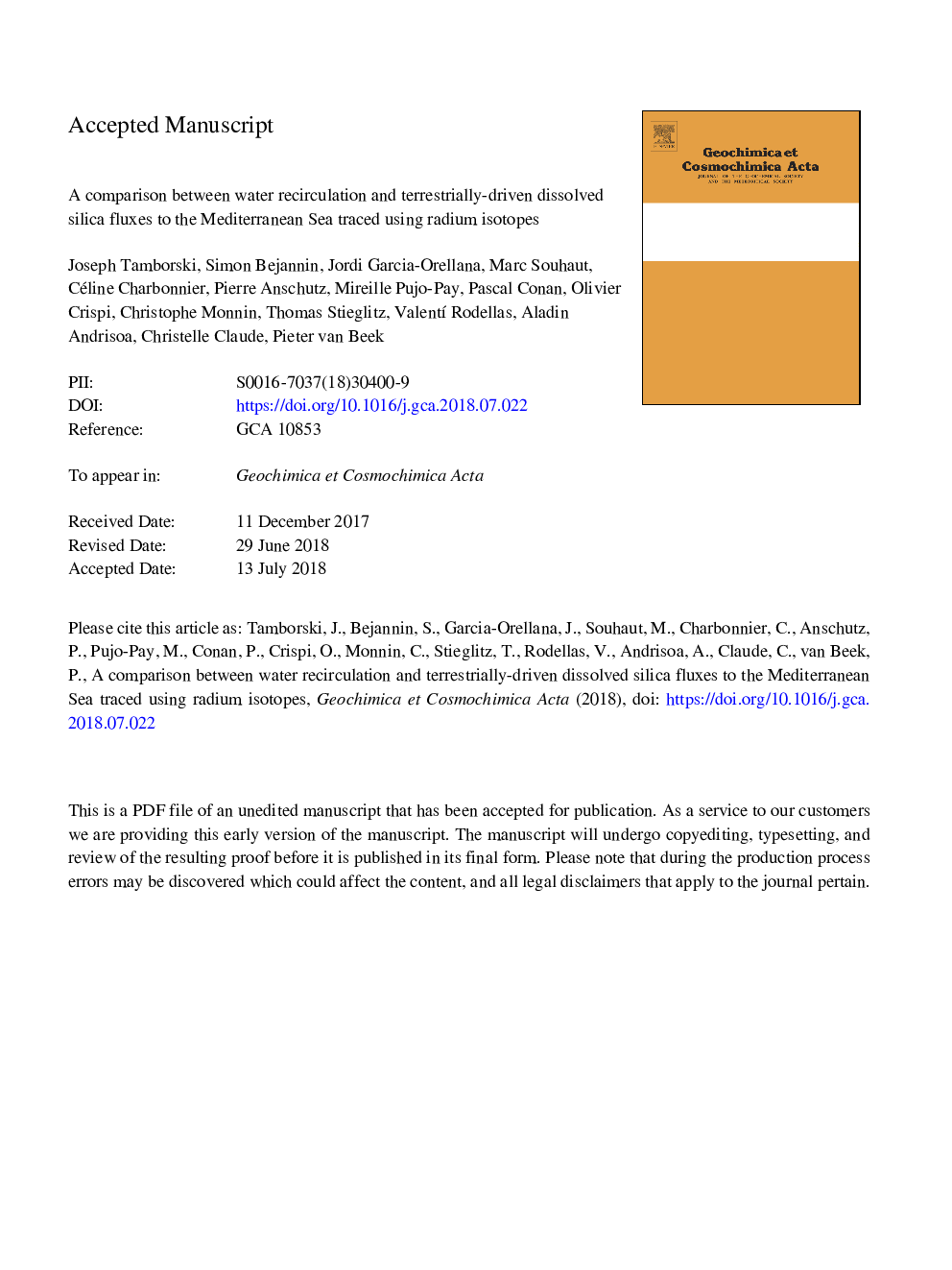| Article ID | Journal | Published Year | Pages | File Type |
|---|---|---|---|---|
| 8910614 | Geochimica et Cosmochimica Acta | 2018 | 53 Pages |
Abstract
The circulation of seawater through permeable coastal sediments is increasingly recognized as an important source of nutrients, including dissolved silica (DSi), to the coastal ocean. Here, we utilized a Ra isotope (223Ra, 224Raex, 228Ra) mass balance to quantify DSi fluxes driven by water circulation to a small shallow coastal lagoon (La Palme; French Mediterranean) during June 2016, as compared to karstic groundwater spring inputs. The DSi flux driven by lagoon water circulation (derived from 224Raex) was approximately one order of magnitude greater (1900â¯Â±â¯1700â¯molâ¯dâ1) than the DSi load of the karstic groundwater spring (250â¯Â±â¯50â¯molâ¯dâ1) and greater than molecular diffusion (970â¯Â±â¯750â¯molâ¯dâ1). Lagoon water circulation was a negligible source of 228Ra, indicating that circulation-driven DSi inputs occur over a time-scale of days. Offshore transects were studied to quantify fluxes of marine-derived submarine groundwater discharge (SGD) from the permeable sandy coastline adjacent to the lagoon, into the Mediterranean Sea. Surface water transects revealed near-shore enrichments of Ra and DSi, attributed to wave-setup and water exchange through the permeable beach between the lagoon and the sea. Upscaling over the 9.5â¯km stretch of sandy beaches results in a marine SGD-driven DSi flux of 2.3â¯Â±â¯1.3â¯Ãâ¯104â¯molâ¯dâ1, similar in magnitude to the Têt river during November 2016 (3.3â¯Â±â¯2.4â¯Ãâ¯104â¯molâ¯dâ1), the largest river in the region. A positive relationship between DSi and 224Raex in lagoon water and seawater, but not 228Ra, suggests that 224Raex and DSi enrichments are derived from a similar source, the sediment (i.e. lithogenic particle dissolution), operating on short time-scales. A marine SGD-driven DSi flux to the Gulf of Lions (3.8â¯Â±â¯2.2â¯Ãâ¯105â¯molâ¯dâ1) is likely continuous over time. The relatively constant DSi inputs from water circulation for the shallow lagoons and beaches along the French Mediterranean Sea may sustain primary production in the coastal zone. In comparison, terrestrial groundwater and rivers supply temporally variable nutrient (N, P, Si) inputs via changes in regional precipitation, runoff and aquifer storage.
Related Topics
Physical Sciences and Engineering
Earth and Planetary Sciences
Geochemistry and Petrology
Authors
Joseph Tamborski, Simon Bejannin, Jordi Garcia-Orellana, Marc Souhaut, Céline Charbonnier, Pierre Anschutz, Mireille Pujo-Pay, Pascal Conan, Olivier Crispi, Christophe Monnin, Thomas Stieglitz, Valentà Rodellas, Aladin Andrisoa, Christelle Claude,
